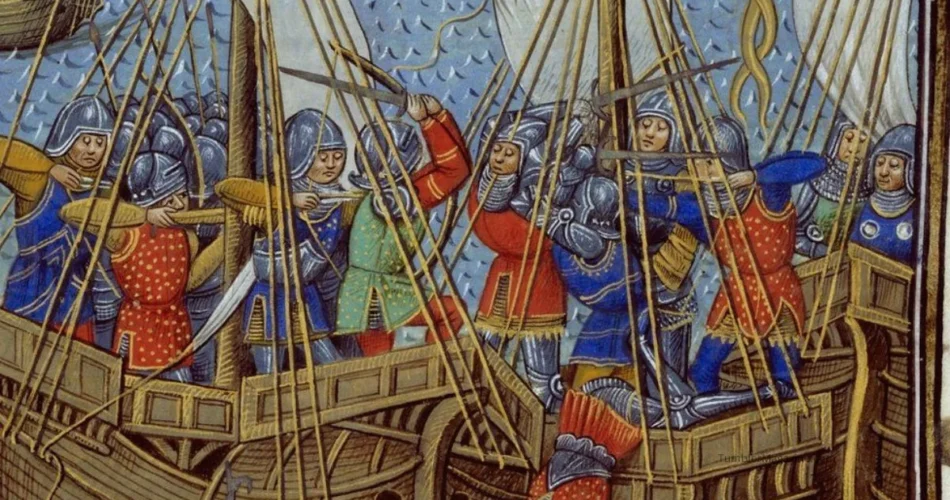Embark on a journey to uncover the enigmatic secrets of the Holigost, an English carrack shrouded in mystery and intrigue. This comprehensive guide will unveil the fascinating tales that have surrounded this historic vessel for centuries.
The Holigost stands as a testament to the skilled craftsmanship and innovative design of its time. Its imposing presence on the seas captured both awe and fear among those who encountered it.
With a rich history dating back to medieval times, Holigost played a significant role in naval warfare and exploration. Stories of daring voyages and epic battles add layers of complexity to its legend.
Through ongoing research and discoveries, scholars continue to piece together the puzzle of Holigost’s past, shedding new light on its significance in maritime history. Join us as we delve deeper into this captivating narrative!
Table of Contents
Overview of the English carrack Holigost
Welcome aboard as we embark on a journey to unravel the mysteries of the Holigost, an English carrack that has captivated historians and maritime enthusiasts alike. Holigost was a formidable vessel known for its impressive size and sturdy construction during the 15th century.
This majestic ship played a significant role in various maritime expeditions and trade routes, contributing to England’s naval power and exploration endeavors. With its distinctive features and historical significance, Holigost stands out as a remarkable example of medieval seafaring technology.
As we delve deeper into the history of this illustrious carrack, we uncover tales of daring voyages across treacherous waters and encounters with foreign lands. The legacy of Holigost continues to intrigue scholars who seek to piece together its past through meticulous research and archaeological findings.
Join us on this voyage of discovery as we shed light on the captivating story of the Holigost – a testament to England’s seafaring prowess and enduring maritime heritage.
Description of the Holigost
The Holigost was an English carrack, a type of large sailing ship used during the 15th and 16th centuries. Its design included high fore and aft castles, making it suitable for both trade and military purposes. With its three masts and square sails, Holigost possessed impressive maneuverability on the open seas.
This majestic vessel was known for its sturdy construction using oak timber, providing durability to withstand long voyages across treacherous waters. The Holigost’s size allowed for ample cargo storage below deck while accommodating crew quarters above.
As one of the notable ships in England’s naval history, Holigost played a crucial role in exploration and trade routes during the Age of Discovery. Its presence symbolized power and influence on the high seas, contributing to England’s maritime dominance during this era.
Today, historians continue to study the remains of Holigost found underwater, unraveling more mysteries about its structure and historical significance in maritime archaeology.
History of the Holigost
The history of the Holigost is shrouded in mystery and intrigue, dating back to the 15th century. This English carrack played a vital role in maritime exploration and trade during the Age of Discovery. Originally built for merchant ventures, it was later commissioned by King Henry VII for naval expeditions.
Throughout its storied past, Holigost sailed through treacherous waters, braving storms and encounters with rival ships. Its durability and impressive size made it a formidable vessel on the seas. Despite facing numerous challenges, Holigost continued to navigate the oceans with resilience.
The ship’s historical significance lies in its contributions to England’s naval power and overseas expansion. It symbolizes an era of discovery and conquest that shaped global trade routes and influenced world economies. The legacy of Holigost lives on through tales of adventure and exploration that continue to captivate historians and maritime enthusiasts alike.
Discoveries and Research about the Holigost
The discoveries and research about Holigost have fascinated historians and maritime enthusiasts for years. Recent studies have revealed intriguing details about this English carrack, shedding light on its construction, voyages, and eventual fate. Archaeological expeditions have unearthed artifacts that provide valuable insights into the daily life aboard the ship.
Researchers have delved into historical documents to piece together a timeline of Holigost’s journeys across the seas. Through meticulous examination of maps and logbooks, they’ve traced its routes and interactions with other vessels during crucial periods in history. These findings have enriched our understanding of maritime trade and exploration during the Age of Discovery.
Cutting-edge technology like sonar imaging has enabled experts to map out potential resting places of Holigost wreck. By analyzing data collected from underwater surveys, marine archaeologists aim to locate and document remnants of this legendary shipwreck with precision. The ongoing efforts to uncover more about Holigost continue to captivate both scholars and enthusiasts alike.
Significance of the Holigost
The Holigost, a remarkable English carrack, holds significant historical importance in maritime exploration and trade during the 15th and 16th centuries. As one of the vessels used by renowned explorer Sir Francis Drake, it played a crucial role in his expeditions to distant lands.
The significance of Holigost extends beyond its voyages; it symbolizes the era of great maritime discoveries that shaped world history. The ship represents courage, innovation, and the spirit of adventure that defined the Age of Exploration.
With its sturdy construction and impressive size for its time, Holigost exemplifies the advancements made in shipbuilding techniques during this period. Its design laid the foundation for future naval architecture developments that would revolutionize seafaring.
By studying artifacts recovered from wrecks like Holigost, researchers gain valuable insights into ancient navigation methods, daily life on board ships, and cultural exchange between different regions. These findings contribute to our understanding of past civilizations and their interconnectedness through maritime routes.
The legacy of Holigost continues to inspire interest in nautical archaeology and historical preservation efforts worldwide. Its enduring significance lies not only in its physical remains but also in the stories it tells about humanity’s thirst for exploration and discovery on the high seas.
Additional Resources and References
Explore further about the Holigost by delving into these additional resources and references:
1. “The English Carrack Holigost: A Historical Analysis” – This comprehensive book provides in-depth details about the construction, voyages, and significance of Holigost.
2. National Maritime Museum – Visit their website for virtual tours and exhibitions related to maritime history, including information on ships like Holigost.
3. Academic Journals – Scholarly articles on naval history often discuss the role of carracks like Holigost in shaping European exploration and trade routes.
4. Archaeological Reports – Stay updated on any recent findings or excavations related to Holigost through official archaeological reports published by research institutions.
By utilizing these resources, you can continue unraveling the mysteries surrounding this iconic English carrack, gaining a deeper understanding of its impact on maritime history.

